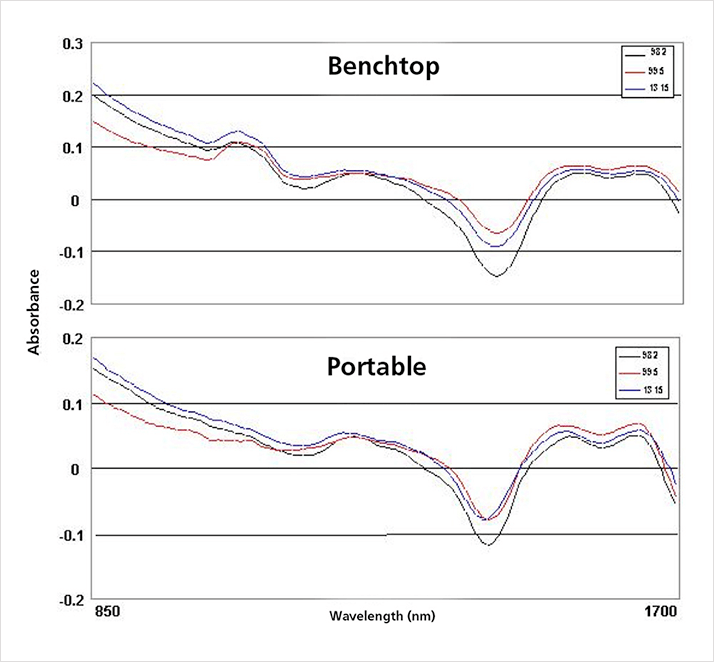Shining Light On … Manure?
Livestock producers once used the color and appearance of manure to judge the diet quality of their free-grazing herds. Modern ranchers use spectroscopy. The near infrared reflection spectra obtained from dried fecal pellets contains the information needed to assess the nutritional health of grazing livestock, and does so non-invasively. When the measurement is taken to the field with portable spectroscopy, this powerful tool can potentially benefit livestock in remote locations and developing countries.

Something to Chew On
Estimating the quantity of forage consumed by grazing animals and its nutritional quality is difficult without detailed chemical analysis of the resulting fecal matter. Fecal NIR spectroscopy (FNIRS) has evolved over the past 20 years to provide an accurate alternative that can determine nutritional factors such as protein intake and digestible organic matter, among many others. The technique uses chemometrics to analyze the NIR spectra of fecal samples produced via a known diet, building up a model and predictive equations to correlate the two. Once the model is developed, fecal samples can be analyzed to understand the diet consumed, and even predict growth rates. This allows ranchers to supplement and optimize diets as needed while minimizing their feed costs, all without gathering animals from the field for examination.
Going Farther Afield
Researchers at the Grazingland Animal Nutrition Lab (GAN Lab) at Texas A&M University have taken it one step further, assessing the ability of a portable spectrometer to perform FNIRS on forage fed Mongolian livestock. The researchers used an Ocean Optics NIR spectrometer, tungsten lamp and reflection probe to measure fecal samples of sheep (Ovis aries). Spectra collected with the portable spectrometer agreed well enough with benchtop instruments to recreate the calibration equations for a set of known fecal samples. Also, when applied to sheep fed a diet of locally harvested hays from the Ulaanbaatar area in Mongolia during a 7-day trial, the instrument yielded good initial results for determination of crude protein, offering promise for further refinement.
 Figure 1: Comparison of 1st derivative spectra for sheep fecal samples, taken with benchtop vs. portable spectrometer systems.
Figure 1: Comparison of 1st derivative spectra for sheep fecal samples, taken with benchtop vs. portable spectrometer systems.A Truly Global Solution
The GAN Lab has taken their mission even further, establishing new labs for FNIRS in East Africa, South America, Mongolia and Afghanistan through World Bank and USAID (U.S. Agency for International Development) grants, and applying the technique to ranging animals as varied as cattle, goats, sheep, bison and wildlife like elk and deer. The GAN Lab’s work allows livestock producers and wildlife managers both in the U.S. and abroad to supplement and optimize the nutritional health of grazing animals accurately and noninvasively. That’s food for thought.
>> Download the full Application Note as PDF
Contact Information
Email:Info@OceanOptics.com





